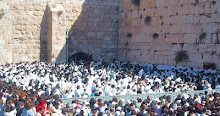http://mail.google.com/mail/#inbox/1181971e9ef1df50
| This is very interesting...............!!! PARTING OF THE RED SEA. Chariot Wheels found at the bottom of the Red Sea -- See pictures below and the route
Red Sea. Evidence of the crossing of the Red Sea .. Pharaoh's drowned army.
Confirmation of the actual Exodus route has come from divers finding coral-encrusted bones and chariot remains in the Gulf of Aqaba. ONE of the most dramatic records of Divine intervention in history is the account of the Hebrews' exodus from Egypt. The subsequent drowning of the entire Egyptian army in the Red Sea was not an insignificant event, and confirmation of this event is compelling evidence that the Biblical narrative is truly authentic. Over the years, many divers have searched the Gulf of Suezin vain for artifacts to verify the Biblical account. But carefully following the Biblical and historical records of the Exodus brings you to Nuweiba, a large beach in the Gulf of Aqaba , as Ron Wyatt discovered in 1978. Repeated dives in depths ranging from 60 to 200 feet deep (18m to 60m), over a stretch of almost 2.5 km, has shown that the chariot parts are scattered across the sea bed. Artifacts found include wheels, chariot bodies, as well as human and horse bones. Divers have located on the Saudi coastline opposite Nuweiba as well. Since 1987, Ron Wyatt found three four-spoke gilded chariot wheels. Coral does not grow on gold, hence the shape has remained very distinct, although the wood inside the gold veneer has disintegrated making them too fragile to move.
When Ron Wyatt first visited Nuweiba in 1978, he found a Phoenician style column lying in the water. Unfortunately the inscriptions had been eroded away, hence the column's importance was not understood until 1984 when a second granite column was found on the Saudi coastline opposite -- identical to the first, except on this one the inscription was still intact!
Depth-sounding expeditions have revealed a smooth, gentle slope descending from Nuweiba out into the Gulf. This shows up almost like a pathway on depth-recording equipment, confirming it's Biblical description, '...a way in the sea, and a path in the mighty waters.' (Isaiah 43:16) The Bible writers frequently refer to the miracle of the Red Seacrossing, for it was an event which finds no equal in history. The Hebrew prophets describe the sea at the crossing site as '...the waters of the great deep...the depths of the sea...' (Isaiah 51:10) Knowing the exact spot to which the Bible writers were referring, what is the depth there? The distance between Nuweiba and where artifacts have been found on Saudi coast is about 18km (11 miles). Along this line, the deepest point is about 800m (2,600 feet). No wonder that Inspired writers of the Bible described it as the mighty waters. And no wonder that not a single Egyptian survived when the water collapsed in upon them. ( A bove right NUWEIBA BEACH- the spot where the crossing began) |





 >
>











No comments:
Post a Comment